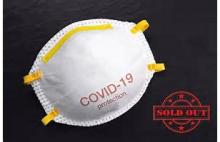HEPA Air Cleaners can help reduce indoor coronavirus exposure
Engineers and doctors say that air cleaning devices could play an important role in protecting your family from COVID-19 — especially as people start spending more time indoors as outdoor air temperatures fall in the Northern Hemisphere.
"It's a relatively easy way to get clean air in a place where people are in close contact," says Joseph Gardner Allen, an associate professor of exposure assessment science who directs the Healthy Buildings program at the Harvard T.H. Chan School of Public Health. "It's a simple plug and play solution in that area." (He bought one in March.)
With new attention on the role that aerosolized microdroplets could play in the spread of COVID-19, should you rush out to buy a portable air cleaner for home use?
The frustrating short answer is, "It depends."
It's accepted that the coronavirus can move in multiple ways, though less is understood about how each contributes to transmission of the disease. Those possible transmission methods include short-range airborne particles, ballistic droplets from coughing or sneezing, long-range airborne particles and contaminated surfaces.
Portable air cleaners can limit the spread of the virus via long-range airborne particles by capturing most of those particles in a HEPA filter and cleaning the air at a rate of up to six times per hour. In a typical home without an air cleaner, the air gets fully changed out about once every two hours through air leakage, often aided by mechanical ventilation systems in newer houses.
So, in the right circumstances, portable air cleaners offer an additional layer of protection.
If you're living by yourself and you don't have guests over, it's not going to add any protection (against COVID-19, anyway ... you may want one to combat cat dander or wildfire smoke).

